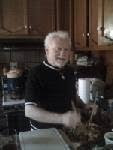FDA Warns About 72 Tainted Weight Loss Products
WebMD Health NewsReviewed by Louise Chang, MD March 20, 2009 --
The FDA today expanded its list of tainted weight loss products that consumers shouldn't buy or use.
In December, the FDA warned about more than 25 weight loss products that contain undeclared, active pharmaceutical ingredients that may be risky.
Now, that warning list includes 72 illegal weight loss products that the FDA wants consumers to avoid. Those products contain any of the following undeclared active pharmaceutical ingredients:
fenproporex -- a controlled substance not approved for marketing in the U.S.
fluoxetine -- an antidepressant available by prescription only
bumetanide -- a potent diuretic available by prescription only
furosemide -- a potent diuretic available by prescription only
rimonabant -- a drug not approved for marketing in the U.S.
cetilistat -- an experimental obesity drug not approved for marketing in the U.S.
phenytoin -- an antiseizure medication available by prescription only
phenolphthalein -- a solution used in chemical experiments and a suspected cancer-causing agent that is not approved for marketing in the U.S.
The health risks posed by these products can be very serious and include high blood pressure, seizures, tachycardia (rapid heartbeat), palpitations, heart attack, and stroke.
Sibutramine, a controlled substance, was found in many of these products at levels much higher than the maximum daily dosage for Meridia, the only FDA-approved drug product containing sibutramine. These higher levels of sibutramine can increase the incidence and severity of these health risks.
Fenproporex, another controlled substance, can cause arrhythmia (abnormal heart rhythm) and possible sudden death.
Tainted Weight Loss Products
Here is the FDA's full list of all 72 tainted weight loss products:
2 Day Diet
2 Day Diet Slim Advance
2x Powerful Slimming
3 Day Diet
3 Days Fit
3x Slimming Power
5x Imelda Perfect Slimming
7 Day Herbal Slim
7 Days Diet
7 Diet
7 Diet Day/Night Formula
8 Factor Diet
Eight Factor Diet
21 Double Slim
24 Hours Diet
999 Fitness Essence
BioEmagrecim
Body Creator
Body Shaping
Body Slimming
Cosmo Slim
Extrim Plus
Extrim Plus 24 Hour Reburn
Fasting Diet
Fatloss Slimming
GMP
Herbal Xenicol
Imelda Fat Reducer
Imelda Perfect Slim
JM Fat Reducer
Lida DaiDaihua
Meili
Meizitang
Miaozi MeiMiaoQianZiJiaoNang
Miaozi Slim Capsules
Natural Model
Perfect Slim
Perfect Slim 5x
Perfect Slim Up
Phyto Shape
Powerful Slim
ProSlim Plus
Reduce Weihgt
Royal Slimming Formula
Sana Plus
Slim 3 in 1
Slim 3 in 1 Extra Slim Formula
Slim 3 in 1 Extra Slim Waist Formula
Slim 3 in 1 M18 Royal Diet
Slim 3 in 1 Slim Formula
Slim Burn
Slim Express 4 in 1
Slim Express 360
Slim Fast (This product isn't related to the Slim-Fast line of meal replacement and related products.)
Slim Tech
Slim Up
Slim Waist Formula
Slim Waistline
Slimbionic
Sliminate
Slimming Formula
Somotrim
Starcaps
Super Fat Burner
Superslim
Super Slimming
Trim 2 Plus
Triple Slim
Venom Hyperdrive 3.0
Waist Strength Formula
Xsvelten
Zhen de Shou
Courtesy: FDA and WebMD.com

